 July 10, 2017 (HLI) – The case of baby Charlie Gard has the gravest consequences for the rights of parents and the autonomy of the family. This assault against the family and life stretches beyond the borders of the UK, and we should all be very concerned.
July 10, 2017 (HLI) – The case of baby Charlie Gard has the gravest consequences for the rights of parents and the autonomy of the family. This assault against the family and life stretches beyond the borders of the UK, and we should all be very concerned.
For those unfamiliar with the case in question, Charlie Gard was born in the UK in 2016 with mitochondrial DNA depletion syndrome, a severe condition that left him struggling for his life. This past March doctors told his parents that there was nothing more they could do. They recommended removing his ventilator and letting him die.
Undeterred, Chris Gard and Connie Yates searched for alternatives. They discovered an experimental treatment that offered the small possibility of a cure. The catch? It’s extremely expensive, and is only offered in the United States.
Still undeterred, Charlie’s parents launched an online crowd-funding campaign and received tens of thousands of donations. In all, the parents raised over 1.3 million British pounds (nearly $1.7 million U.S.) – more than enough to pay for the treatment.
For the first time, there was a glimmer of hope for Charlie.
Then, inexplicably, the hospital where Charlie is being kept – Great Ormond Street Hospital in London – refused to release Charlie. They said they had determined that the proposed treatment was unlikely to help the boy, and would only prolong his suffering.
Shocked, Charlie’s parents appealed that decision. A court ruled that Charlie should be permitted to “die with dignity” (a chilling phrase, for those familiar with pro-death rhetoric). They appealed the case all the way up to the UK Supreme Court. At every step, they lost. Then, last week, the parents’ last recourse – the European Court of Human Rights – refused to overrule the UK court.
With that decision, Charlie’s case exploded onto the international stage. A ferocious public debate ensued, with global figures including President Trump, Pope Francis and many others weighing in. Charlie remains on life support, but at any moment the hospital could decide to remove his ventilator.
Sadly, confusion has plagued the emotionally fraught case. Even some pro-lifers seem to have been misled by the rhetoric of the hospital and the court system, while the core issue – the natural rights of the parents to make this decision for their child – has been lost.
Moreover, many were shocked after an initial statement from the Vatican’s own Pontifical Academy for Life (PAV) seemed to side with the hospital, which was met with a fierce backlash from Charlie’s supporters. Thankfully, shortly thereafter Pope Francis issued his own statement. The Holy Father rightly pivoted the Vatican’s focus away from the complex and ultimately tangential issue of the nature of the proposed treatment, to the rights of Charlie’s parents. Speaking of the parents, the statement said: “For them [Pope Francis] prays, hoping that their desire to accompany and care for their own child to the end is not ignored.”
Equally as important, the Vatican followed up with concrete action: Bambino Gesu, the Vatican’s own hospital, offered to take Charlie and care for him, for free. This was a strong, and much-needed gesture.
It is important that we be 100 percent clear what this case is not ultimately about: the distinction between “aggressive” or “extraordinary” care, and ordinary care. The Catholic Church has always been very clear that there is no moral obligation to use what the Church labels “extraordinary” means – which can include artificial respiration – to prolong life. As Pope John Paul II wrote in Evangelium Vitae:
In such situations, when death is clearly imminent and inevitable, one can in conscience “refuse forms of treatment that would only secure a precarious and burdensome prolongation of life, so long as the normal care due to the sick person in similar cases is not interrupted”. … To forego extraordinary or disproportionate means is not the equivalent of suicide or euthanasia; it rather expresses acceptance of the human condition in the face of death.
However, at the same time, the Church has also never said that there is a moral obligation not to pursue extraordinary means. That must be evaluated on a case by case basis. More importantly, the decision about whether to pursue extraordinary care should rest with the rightful authority – in this case, clearly Charlie’s parents.
So what is the fundamental issue? One thing only: a struggle for power.
That is: The hospital, and the UK government, believe that the state, and not Charlie’s parents, should have the power to decide what is best for Charlie (and, presumably, others like him). And to drive that point home, they were willing to fight this case all the way to the EU Court of Human Rights.
If they succeed, what this means for parental rights is terrifying. As Phil Lawler at Catholic Culture summarized:
The injustice here is not that Charlie will be (maybe already has been) taken off his life-support system. The decision to turn off a ventilator is always painful, but sometimes justified.
The injustice is that Charlie will die when the hospital administration wants, and where the hospital administration wants. His parents have been deprived of their right to supervise his case. They could not take him the U.S. for experimental treatment. They could not take him home, to die in peace. As one of our readers observed, Charlie was essentially kidnapped, so that the authorities would be sure that he died on schedule.
The Catholic Church has always defended the primary rights of parents over the welfare and education of their children. Wherever those rights have been eroded, totalitarianism has not been far behind.
Indeed, it is no accident that Communism, Fascism, and other totalitarian ideologies have always sought first to sever the bond between parents and children. Once the family has been dismantled, it is an easy matter for the totalitarian state to fill the void.
The hospital and the courts may believe that they are doing what is best for Charlie. But in reality, their actions are at root totalitarian. They have robbed the parents of their natural rights, and set the state up instead as the final arbiter of life and death.
Rev. Patrick Mahoney, a U.S. pro-life activist who is spearheading protests in the UK on behalf of Charlie, warns that what is at stake in Charlie’s case is “universal.” The issue is, he says, “will parents be at the center of making decisions for their children? Or will those decisions be ripped from them by hospital officials, judges, and government bureaucrats?”
“This is not a liberal, conservative, or political issue at all. It’s a human rights issue,” he continued. “It’s the simple notion that parents should not be excluded and shut out from making critical decisions that impact the health and future of their children.”
The concerns and moral questions about this case will continue; meanwhile, Charlie and his parents deserve our steadfast support and prayer. Charlie’s parents have the best interests of their son at heart, and we must demand that the government respect their decision, as well as acknowledge and secure Charlie’s inherent dignity.
Reprinted with permission from Human Life International.
 In a modern-day version of eugenics, inmates in White County, Tennessee are volunteering to receive vasectomies or birth control implants in exchange for credit toward their jail sentence.
In a modern-day version of eugenics, inmates in White County, Tennessee are volunteering to receive vasectomies or birth control implants in exchange for credit toward their jail sentence.
 https://theguidingstarproject.com
https://theguidingstarproject.com

 July 23 marks the beginning of Natural Family Planning (NFP) Awareness Week in the United States. In this article Gerard Migeon, founder and CEO of
July 23 marks the beginning of Natural Family Planning (NFP) Awareness Week in the United States. In this article Gerard Migeon, founder and CEO of 


 It’s almost NFP Awareness week (July 23)! It’s easy to get swept away in NFP promotion and forget that it’s not always a breezy journey for everyone. So here we have laid out the guide to promoting Natural Family Planning without the rose-colored glasses. The three most important things to keep in mind when sharing your love of Natural Family Planning are sincerity in the struggles you have encountered, joy in the wonderful parts, and flexibility in allowing others to be where they are on their journey.
It’s almost NFP Awareness week (July 23)! It’s easy to get swept away in NFP promotion and forget that it’s not always a breezy journey for everyone. So here we have laid out the guide to promoting Natural Family Planning without the rose-colored glasses. The three most important things to keep in mind when sharing your love of Natural Family Planning are sincerity in the struggles you have encountered, joy in the wonderful parts, and flexibility in allowing others to be where they are on their journey. For many women, the decision to go on birth control is a normal part of womanhood. At well-woman checks and appointments after a baby’s birth doctors say it’s time to talk about birth control, and the general assumption is that you’ll use birth control until it’s the perfect time to have exactly as many kids as you want.
For many women, the decision to go on birth control is a normal part of womanhood. At well-woman checks and appointments after a baby’s birth doctors say it’s time to talk about birth control, and the general assumption is that you’ll use birth control until it’s the perfect time to have exactly as many kids as you want. OTTAWA, July 12, 2017 (
OTTAWA, July 12, 2017 (
 July 10, 2017
July 10, 2017 
 When I started nursing school 50 years ago, medical ethics was not a course but rather common sense principles incorporated into our education. There was no controversy about not harming patients, integrity, equality of treatment regardless of status, etc.
When I started nursing school 50 years ago, medical ethics was not a course but rather common sense principles incorporated into our education. There was no controversy about not harming patients, integrity, equality of treatment regardless of status, etc. T
T D
D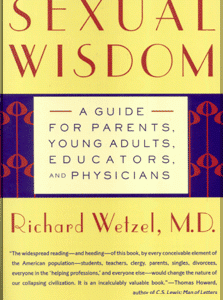
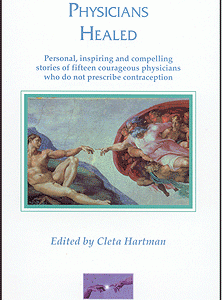

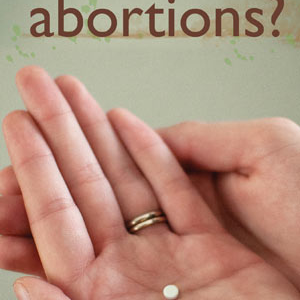

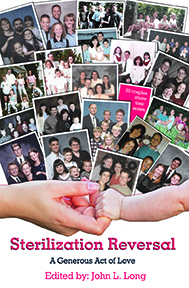
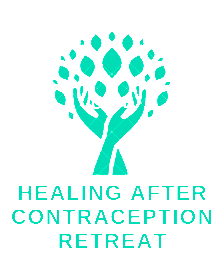
New book offers powerful solution to today’s crisis in the Catholic Church
Having thrown my Sunday lot in with the TLM, I began to peruse books about it. The best and most readable I have encountered is Noble Beauty, Transcendent Holiness: Why the Modern Age Needs the Mass of Ages by Peter Kwasniewski. As Kwasniewski is a traditionalist, he may feel embarrassed that I enjoyed his book more than the works of epochal Martin Mosebach (The Heresy of Formlessness), the masterful Michael Davies (Cranmer’s Godly Order, Pope Paul’s New Mass) and the excellent H.J.A. Sire (Phoenix for the Ashes). A good spiritual son to these fathers of the liturgical restoration, Kwasniewski has starred their works in his bibliography for our attention. Nevertheless, as a voice of the post-1970 generation, Kwasniewski gives old arguments new juice.
Dr. Kwasniewski (give it a shot — k’vas-n’YEF-ski is easier to pronounce than Wojtyła) is well-known in Catholic traditionalist circles for his writings on the New Liturgical Movement blog. He taught at the International Theological Institute in Gaming, Austria, and now he teaches at Wyoming Catholic College. If Kwasniewski teaches as well as he writes, his students are very lucky indeed.
Noble Beauty, Transcendent Holiness argues on several fronts that the Roman Catholic Church is in a spiritual crisis that can be resolved only by a return to the ancient, slowly and organically developed liturgy of the Latin Church. Given the “hemorrhaging” of adherents from that Church and the maelstrom of confusion among those who remain as to what the Church actually believes, Kwasniewski is on very strong ground.
One of his most convincing arguments involves the human longing for something challenging, complicated, and mysterious in the worship of God. (Note the 50-year craze in the West for East Asian meditations.) Kwasniewski considers the traditional liturgy not as much the work of human hands as one of the greatest gifts of God to humanity. He argues that the Traditional Latin Mass, alongside the Marian piety and Thomist theology inextricably linked to it, is one of the guardians of authentic Catholic faith.
Noble Beauty, Transcendent Holiness is itself a beautiful book, both in form and content. Each chapter begins with a meditative photograph, and most end with a heartfelt prayer. Like any organic development, the book grafts the new onto the old. It begins with a Forward written by Mosebach and ends with young Kwasniewski’s most personal reflections. Mosebach delves into the legacy of Pope Benedict, and Kwasniewski faces the challenges offered by Pope Francis. Meanwhile, Kwasniewski is so adept at writing simple yet gorgeous sentences that I broke my pencil several times underscoring them all.
Take, for example, Kwasniewski’s conclusion that it is better to suffer the knowledge of what the liturgy of 1970 replaced than to have remained in blissful ignorance:
My spiritual life would never have grown as it did, nor my grasp of sacred theology, had it not been for the beauty, reverence and profundity of the traditional liturgy that I discovered as a young man, fell in love with, and now long for ceaselessly. I would not today be a Benedictine oblate praying the Divine Office, which is a source of tremendous vitality, light and consolation to me. My situation is far from optimal, due to the irregular availability of the traditional liturgy in my community, but I do not regret bearing the cross of knowledge, which has opened to me a whole world of wonders to which I would otherwise be blind. It is a flowering cross, and I imagine the same is true for many who love traditional ways.
Many of Kwasniewski’s chapters were developed from essays, so he repeats himself a number of times throughout the book. This is not a weakness — repetitions enrich both the Traditional Rite and the Holy Rosary, after all — but it adds to necessity of reading the book slowly, chapter by chapter, instead of in one great 300-page gulp.
Meanwhile, although there is much meaty scholarship here, the book is accessible to the serious and curious reader — for the most part. Although I studied theology for five years, I could not remember what an “anaphora” was, and I was stumped by the phrase “hylomorphic composition” until I consulted a professor of linguistics. I conclude, therefore, that this excellent book would be even better if it included a glossary.
Noble Beauty, Transcendent Holiness: Why the Modern Age Needs the Mass of Ages
Peter Kwasniewski
Angelico Press, $19.95
Posted in News & Commentary | No Comments »